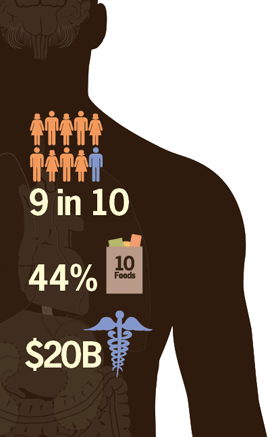Every Tuesday I answer a question about food or nutrition in NYU’s student newspaper, the Washington Square News. My deal with the dining editor is that she sends one question a week and I do the best I can with it. The questions reflect the kinds of things that NYU undergraduates want to know.
This week, the question is about cooking chicken:
Q. What are the more cheap and healthy ways for students to buy and cook chicken? What are the health differences between chicken breast/legs/etc.?
A. Let me answer your second question first. Chicken is a good source of protein and other nutrients. Most of the nutritional differences between one part and another are too small to bother mentioning. The one useful difference is that dark meat has a bit more saturated fat and cholesterol than white meat. Even so, most of the fat in chicken is in the skin. Worried about fat? Remove the skin.
The important nutritional differences result from preparation. If you add fat during preparation, you are also adding calories (fat has 9 calories per gram as compared to 4 for protein or carbohydrate).
The healthiest way to cook chicken is to bake it in the oven or stir fry it with vegetables. Put the parts in a baking pan, rub some olive oil on them, and surround them with plenty of garlic, lemon, carrots, or whatever you like. Bake at 350° until brown.
Buy whole chickens so you aren’t paying someone else to cut it up for you. Cutting a chicken is easy and YouTube has plenty of videos that explain how to do it.
The cheapest chicken is industrially produced, meaning that the chickens are raised in huge flocks indoors under crowded conditions, treated with antibiotics to prevent illness and promote rapid growth, and are ready to slaughter six weeks after hatching.
If you don’t want to eat chicken raised this way, you should look for birds that were raised free-range without antibiotics and are Certified Organic, kosher, or halal—if you value such things. You will have to pay more for such meat but it will taste better.
You will be supporting a food system that is healthier for chickens, people, and the planet.



